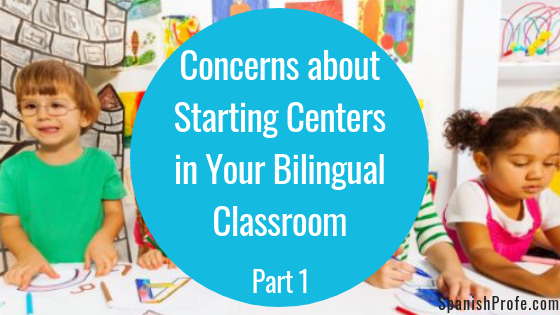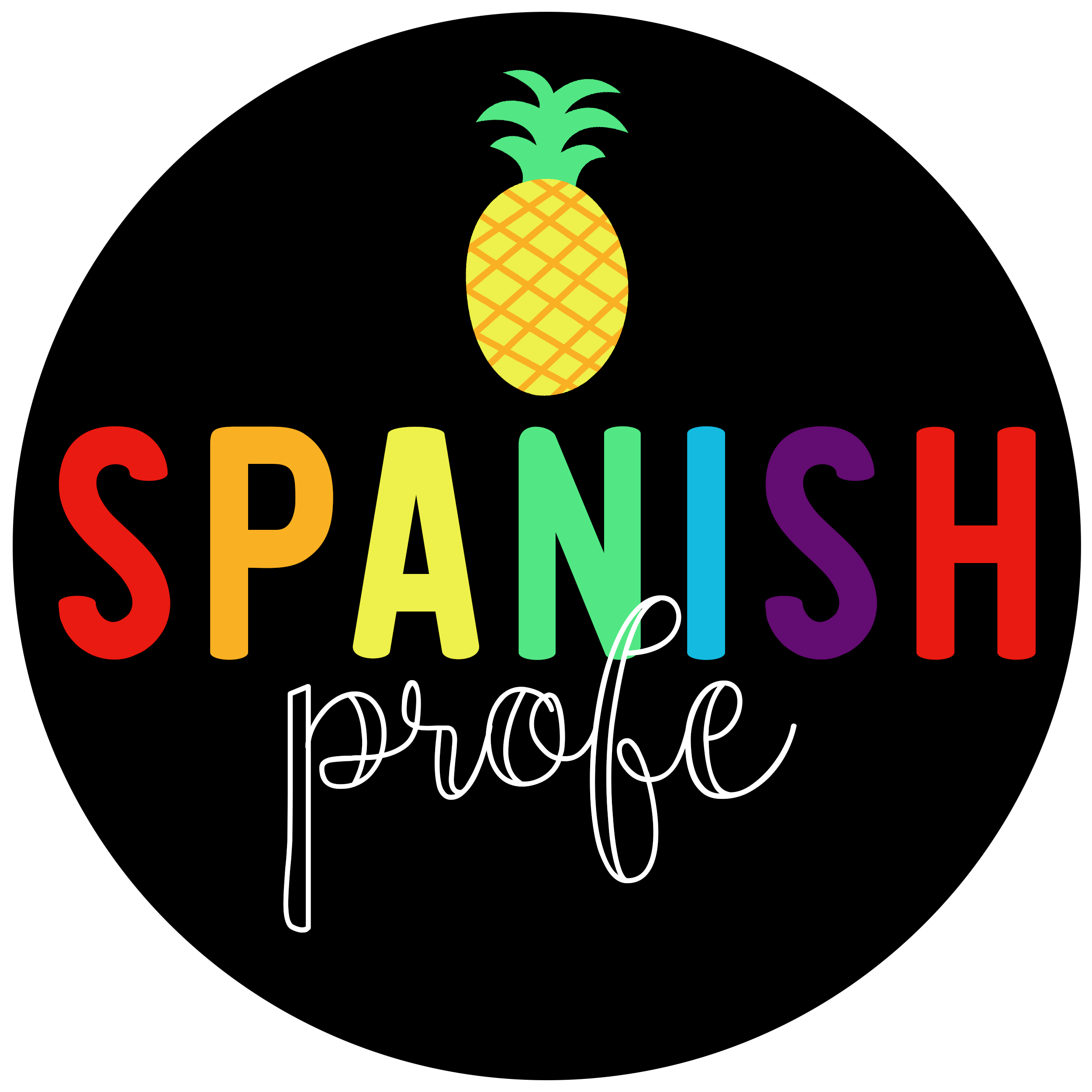
New and even seasoned teachers have a lot of questions about the best ways to implement centers in their classroom.
If you work in a bilingual, dual language or Spanish immersion elementary school, it is very common to see centers during literacy and math blocks. Some Spanish immersion schools follow particular programs such as the Daily 5 and others have looser guidelines and tell teachers they have 60 or 90 minutes literacy block each day.
This is article one in a series where we will talk about concerns about setting up centers (math or literacy) in your bilingual classroom. This is going to be a four or five part series on starting and maintaining productive centers in your Spanish immersion or bilingual classroom.
Bilingual teachers top six concerns about having centers in the classroom. If you do not have centers set up in your dual language classroom right now, maybe this is one of the reasons why.
1. Students learning to be self-reliant or independent
How do you get students to learn or be independent? It this possible in Kindergarten? Or 1st grade?
2. Engaging students while in centers3. What kinds of activities should students be doing?
What are the best activities? Will I have to prep 100 different centers? How often should I switch centers? What is the best way to do it?
4. How will I know they are learning?
Will students turn in work to me? Does this involve a lot of correcting? Are they just going to spend time doing busy work in Spanish?
5. Differentiation (Providing different or scaffold activities for students at different levels)
How will I provide differentiated centers to my students that need extra support, the students at grade level and those that are above grade level?
6. Amount of prep work involved to do centers
How many hours will this take to prep? How many centers or stations do I need to have ready at once?
Concern #1: Students learning to be self-reliant or independent
It is completely possible to have your students in your bilingual classroom working independently while you meet with small groups. This will happen however with a little bit of effort on your behalf; there is no magic center fairy that will sprinkle fairy dust around. You need to take all the steps to step up and prepare students to work independently.
Ways that you can do this: checklists, visuals, rubrics, examples, etc.
Concern #2: Engaging students while in centers
Students love the opportunity to work on a variety of tasks and activities. Center time is often kids favorite time in my classroom. It is not hard to create engaging literacy and math centers that do not take weeks to plan.
Concern #3: I don’t know what kind of activities students should be doing.
This will depend on the subject, your school or school district, class size, amount of time that you have available and resources in the classroom. Find a teacher colleague or ask your principal in anyone in your school has successful centers that you could talk to or better yet, observe. If you are not receiving guidance from your grade level team or are the only bilingual teacher in the building then stick around to read the rest of this series.
Concern 4: How will I know they are learning?
You could have them complete a product, like a worksheet, exit card/ticket, or something they have to turn in. You could keep an eye on them to ensure they are doing what you set up for them to do. As a teacher, you will know when students are not working and they will be moving, having a conversation, or doing something that is obviously off task.
Concern #5: Having differentiated activities
Although this sounds difficult to most, differentiating doesn’t need to be difficult. Students can produce more or less work. Can produce or do a different level or type of work, while at the same center. Differentiation doesn’t mean that you need to have four or five different levels within each center because that would take too long to prepare.
Concern #6: Centers are going to take a ton of prep work on top of everything else I have to do and plan.
I get you… as a mom of six, I don’t have time to prep centers for my classroom because I value my personal and family time over Pinterest perfect centers 100 percent of the time. There is some prep work involved in centers but you are the one who decides how much or little prepping you will do. You also decide what kind of centers you will have in your dual language classroom. It is completely flexible. If you feel one center isn’t working for your group of students than you could change it.
Read part two of this series on starting and maintaining productive centers in your Spanish immersion or bilingual classroom, we will talk about having clear expectations and procedures during center time.
Did you enjoy this article? Want more tips, ideas and free resources in Spanish? Subscribe to Spanish Profe’s email list here.









